India at a Crossroads
Air Date: Week of October 9, 2015
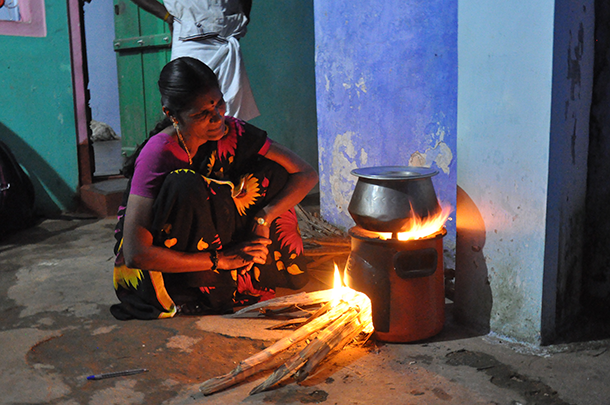
All over India, cookstoves burning twigs and wood generate pollution inside homes. (Photo: Meera Subramanian)
Investigative journalist Meera Subramanian crisscrossed India examining its environmental problems and searching for homegrown solutions described in her new book A River Runs Again. She tells Living on Earth’s Helen Palmer that everywhere she looked, she found serious concerns, but also hope for a better future.
Transcript
CURWOOD: It’s Living on Earth. I'm Steve Curwood. The world’s third largest greenhouse gas polluter, India, has laid out its emissions commitments for the upcoming climate conference in Paris. The country plans to vastly increase renewable energy use, but it also plans to expand nuclear and coal-fired power. India’s negotiators argue that, given how modest emissions are per capita, they need growth, as millions still live in deep poverty without clean water or power, and the environment often suffers as a result.
It was the environmental crisis – impoverished farmland, dying vultures, polluting cookstoves – that led investigative journalist Meera Subramanian to criss-cross the country in search of home-grown solutions already helping India deal with its multiple problems. Her new book is called “A River Runs Again” and she spoke with Living on Earth’s Helen Palmer.
PALMER: The organizing principle of your book, which is actually a book of journalism, you have a very interesting organizing principle of it, explain that to me.
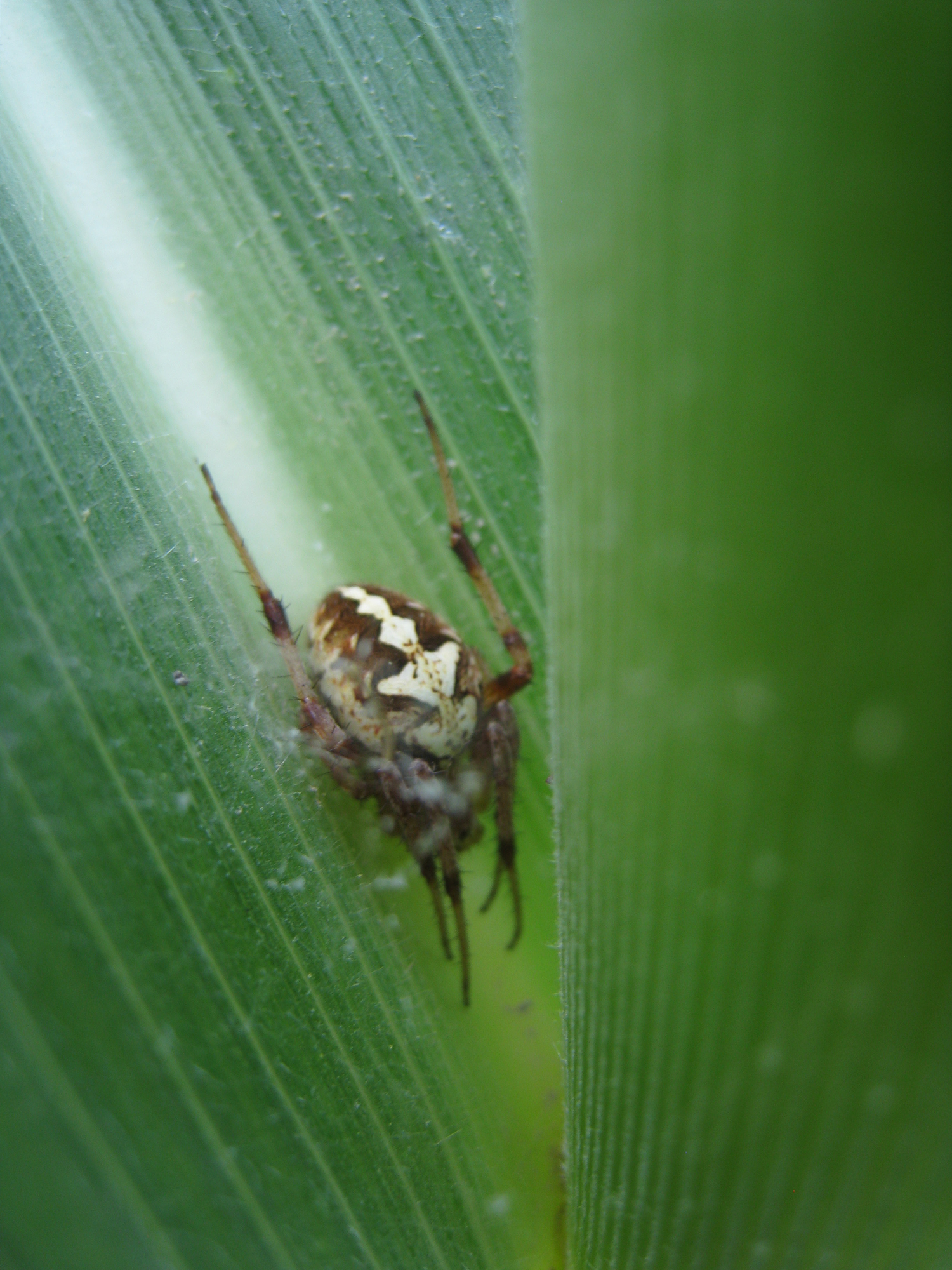
In the Punjab village of Chaina, about a third of the 200 families farm organically and rely on insects like spiders to control harmful pests. (Photo: Meera Subramanian)
SUBRAMANIAN: Yeah, I decided to use the five elements to tell the story, I think it can be easy to be overwhelmed by approaching something as big as the state of the environment and the natural world in a place like India, and so I wanted to make it accessible to people. I wanted to bring stories about what people are doing on the ground in India today, right now.
PALMER: Well, you say the five elements – I think most of us only think of four elements.
SUBRAMANIAN: Right, it’s earth, water, fire, air and ether mad ether is the intangible essence of everything that's between everything else.
PALMER: And this is a particular Indian idea that it's five?
SUBRAMANIAN: Yeah, this is drawing on the Pancha mahabhuta which is the old Sanskrit idea of these five elements but it was interesting once I started investigating that I was finding that the idea of elements, it exists in Islam, it exists in ancient China, definitely in ancient Greece, I feel like what I found was that throughout time and throughout cultures people have tried to identify what makes this world that we inhabit.
PALMER: Well, first of all you give us earth, and you take on what is to most of us a kind of myth - the fantastic success of the Green Revolution, you take this on and you kind of do a bit of myth busting.
SUBRAMANIAN: I do. It's not that the Green Revolution didn't work on many levels, it did increase production but it seems like what the missing part of the equation is, is what the cost of that was and whether that works for the long-term. And so we're now 40-50 years into the Green Revolution and what we’re finding is that soil is depleted, water has run out, all of the inputs that go in do create food, but that food has chemicals in it that are changing our bodies, they're changing the environment that we live in, they’re changing the quality of the water that runs off of those fields and all of those things are having huge impacts.

The newly conserved water gives village children a place to play. (Photo: Meera Subramanian)
PALMER: We’ve actually also all heard stories in the newspapers about Indian farmers in terrible debt and killing themselves, and this is at least partly because of the cost of fertilizer.
SUBRAMANIAN: Right, it’s not just fertilizers, it’s the entire system and I think that was one part that made me think that we need to be more cautious about looking at the model of the Green Revolution because it is an entire economic system. I met one farmer in Punjab who just felt like it was a roller coaster, he felt like there was constant admission fees and every time you paid one ticket, it would work for a while and then the magic seed suddenly didn't work any more and a new pest had come and you had to get a new pesticide and he just felt like he was on this hamster wheel that he couldn't get off and he didn't like it, but he did step off, he stepped off and he said, “I'm going back to how used to do this, I’m going to go back to how my father farmed before all these chemicals were given”. And that's not without its challenges. So some of these farmers are really struggling and I think it was especially noteworthy that many of the farmers that I met were transitioning, so they were starting to do some of their acres in organic farming while they continued to do the rest of their's in traditional, conventional farming, using the chemicals and guess which ones they were choosing to feed themselves and their families?
PALMER: [LAUGHS]
SUBRAMANIAN: [LAUGHS] It was the organic and then the rest of it would go to market. A lot of the science does say that switching to organic is not going to get you the yields, but the seeds cost less, the inputs are less, soil becomes alive again, it holds water better, it decreases erosion, it's an amazing carbon storehouse which, as the climate changes, becomes a more important factor of agriculture which is a huge part of climate change right now, so all these factors come together.
PALMER: So, to move on from earth to water, as you do in your book, one point you're making about earth is that you're going back to how they used to do it, and that seems to be exactly what you're doing with water as well, or what you’re pointing to.
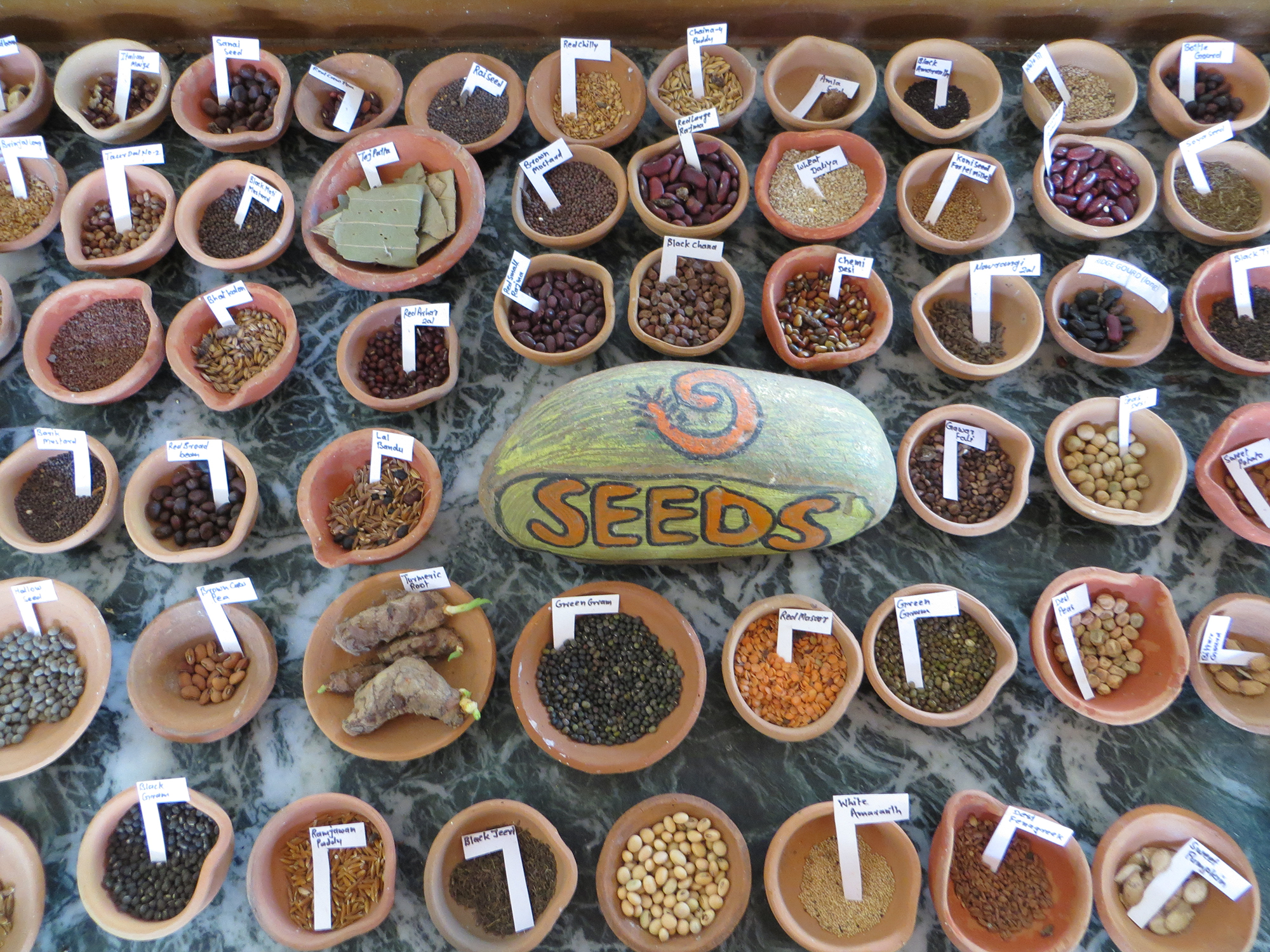
The organic seed bank of Navdanya, a nonprofit established by Vandana Shiva in 1984. (Photo: Meera Subramanian)
SUBRAMANIAN: Yeah, the situation with water was looking at an area in Rajasthan where the semi arid landscape, so water was pretty minimal, and they're pretty dependent on monsoon rains but the wells had just been depleted again -- this is population coming into it, as well as intensive agriculture, which both increase the demands and pressures on water systems and so the aquifer had gone down, the wells had all dried up and people were leaving because there was no way to work the land or have livestock there any more. And so what they did in this area in Rajasthan, led by the efforts of the man who is known as the Rainman of Rajasthan, Rajendra Singh, they started just building really small-scale dams, little check dams called johads, that helped capture the rains when they came and just that small action, of just helping the water pause when it comes, so that it doesn't just run off and cause erosion and disappear, you just help it stay put for just a short bit, and that helps it percolate down into the aquifer and basically constantly replenishing the system, and wells that had gone dry began to spring back to life. And what I found when I investigated, is a lot of the systems were in place in some way, all across ancient Asia and China and all these places, and it's just many of them had been forsaken and people started heading towards big dams and believing that you just wait, and the government will provide the water and people kind of stopped taking care of their own plots of land. And so there's something about people reinvesting in their local landscapes and taking part in the management of them in a really positive way.
PALMER: It reminds me actually of - if you go to Peru and places like that, where you see all these tiny little terraces, like two feet wide little terraces, all up the sides of the Andes there, you know, and they’re very ancient and that's how they grow their food.
SUBRAMANIAN: Right, it's a limited landscape so they figured out how to do it. There is something, I mean I think that's where the most hope comes for India, recapturing a lot of the ancient knowledge and also pairing it with all of the things that we now know. There's things that we know about, intensive agriculture and water management that are high-tech, looking at energy issues which is a huge part of what India’s facing right now in terms of the natural crises, is looking at smart grids and ways that we can be really efficient about using energy, and sometimes that has nothing to do with traditional knowledge, sometimes that's really going cutting-edge, but I think combining the best of the old and the best of the new you could really blaze a new path forward.
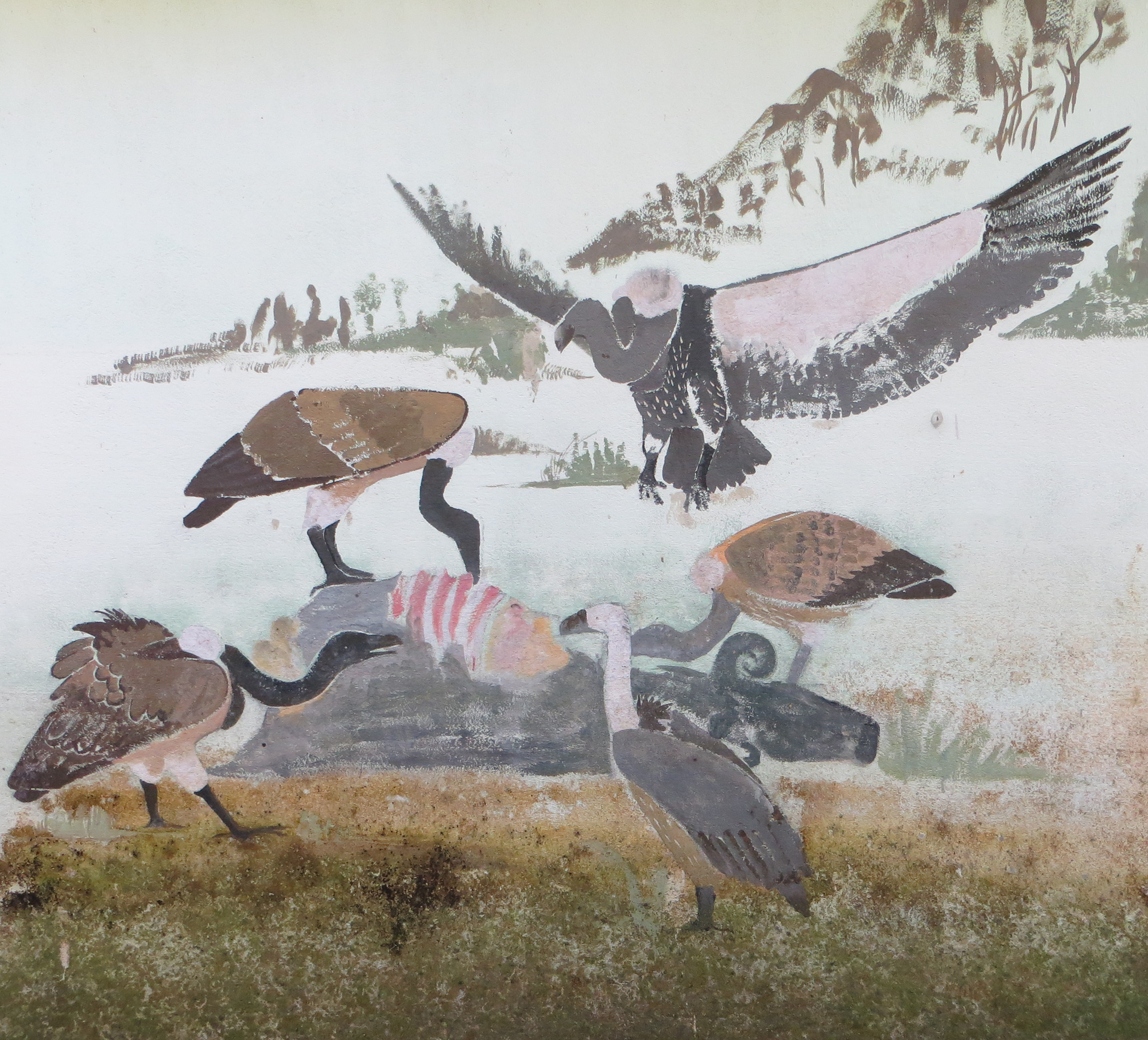
Artists celebrated the millions of vultures that cleaned up carcasses and the refuse of over a billion Indians. (Photo: Meera Subramanian)
PALMER: The next one you come to is fire, and you point to one of the biggest problems we know about, well, not only in India, in much of the developing world, the question of cook stoves and how women cook and how women are basically cooking on stoves that use biomass, that use dried dung, or use wood in some cases, and they're very very smoky, the women are getting sick and it produces terrible pollution, which is also bad for the planet. So I have to say, it's a simple problem but it doesn't seem to have a simple answer.
SUBRAMANIAN: I agree, it's a very, very complicated question. I used to work in the environmental nonprofit field when I was in my 20s, and part of that work was actually working on those cookstoves. We were helping develop and build them and they're really amazing and they’re really amazing, especially in the lab under very controlled circumstances but it was really tough for me as a reporter, because I really believed in the stoves and went out to find success stories and found a nonprofit that was doing very good work and was really held in high regards in Maharashtra, and I went to their quote unquote “smoke-free village”, their exemplary village, and I just had, I went into home after home and I just couldn't find a single one of the stoves working, just a couple years after they had been distributed. And so that just led to the question of - just asking ourselves, in terms of development, asking harder questions about, if something is not working, it doesn't mean that the stove is just not quite perfect yet and we just need to keep developing it, maybe there is something there that has a deeper question that needs to be asked, like one of the epidemiologists was questioning whether we should be asking the world's poor to be using a type of technology that we would never use.
Why don't we think about a way to get them something that is more akin to what we would be happy using, here in the developed world, and not try to just push those ideas of the perfect wood cookstove off to them, because the reality was that it just wasn't working on any large-scale. There are definitely successful fuel-efficient wood cookstove projects that are out there, and the stoves are being developed, and they are getting disseminated on a small scale, but the goals of the Global Alliance for Clean Cookstoves and other places that are really dedicated towards getting these stoves out there, just seem to have some kind of fundamental limitations, that to me, out there in the field, on the ground in India, seem to say that we need to maybe revision how we get energy to the world's poor.
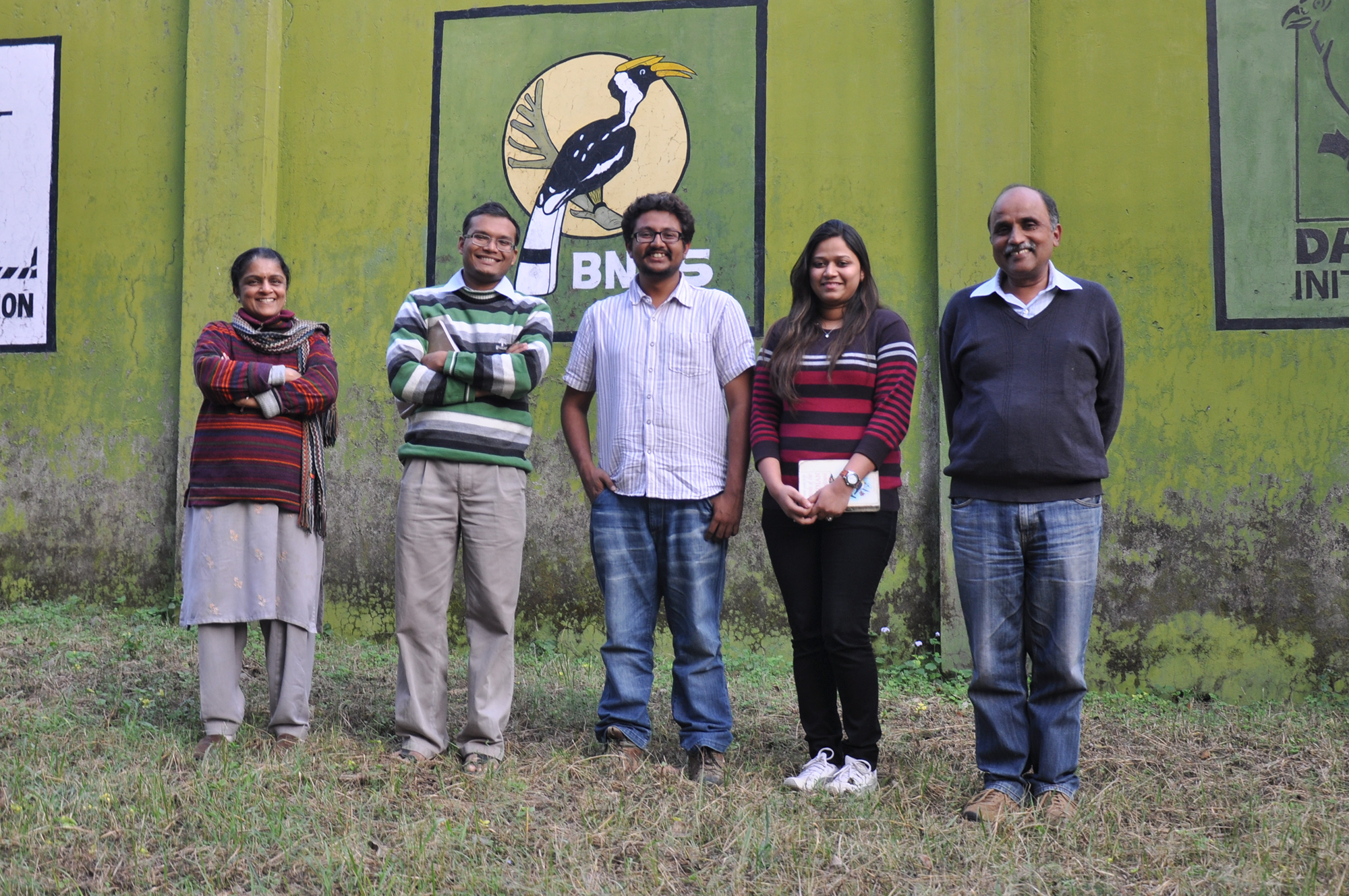
Some of the staff members of BNHS (vulture) captive breeding program in Pinjore Haryana, India (Photo: Meera Subramanian)
PALMER: So air. You focus on something that is very much unloved and that is the vulture, but vultures are in trouble in India.
SUBRAMANIAN: They are in trouble and I love the vultures - I hope I'm not the only one [LAUGHS] - they are these amazing creatures, they just, without any appreciation they did this amazing job of basically cleaning up the residue of 1.2 billion people living on a subcontinent. They just go around and clean things up and then a really terrifying conservation story of a painkiller called Diclofenac, that humans have used for decades and then farmers in the ’90s started giving it to their livestock in India. And if that animal dies, and the vultures come and eat off of that carcass, the vultures have renal failure and they just die. It was just an amazing catastrophic collapse of salvation vultures in the span of just 10 years, looking at 99% decline, and so that just raised all these fascinating questions about how ecosystems work. Nature does not like a vacuum; feral dogs, which are extremely abundant in India, seem to have filled that vacuum; numbers correlate in terms of the vulture populations going down and the wild dog populations going up, and dogs cause a lot more problems than vultures, in terms of human interactions, vultures fly away from you, they really don't want to spend any time with humans but dogs are a very different troubling matter.
PALMER: Is this something that's actually been - I know you've done a lot of research on this - is this a problem that is actually getting close to being fixed?
SUBRAMANIAN: It's amazing with conservation, and many of these issues that sometimes it’s the smallest thing that can change a habit or behavior. And so India was great and pretty proactive, once they figured out that this was what was causing the decline, they banned Diclofenac for veterinary use, so it was still allowed for humans. But the crazy thing is that the human vial would be this big multidose vial, perfect for giving to a cow, so what the conservationists have been working on for years and successfully were able to implement, is removing that multidose vial, so now the vial for Diclofenac is human size. It means that if a farmer wants to give it to his cow, he has to go out and get a bunch and it's just a little inconvenient, and so the hope is just that little bit of an inconvenience will be enough to get it out of use, ’cause the black market was thriving in India and so even though the use had gone down after that ban, it had not gone away.
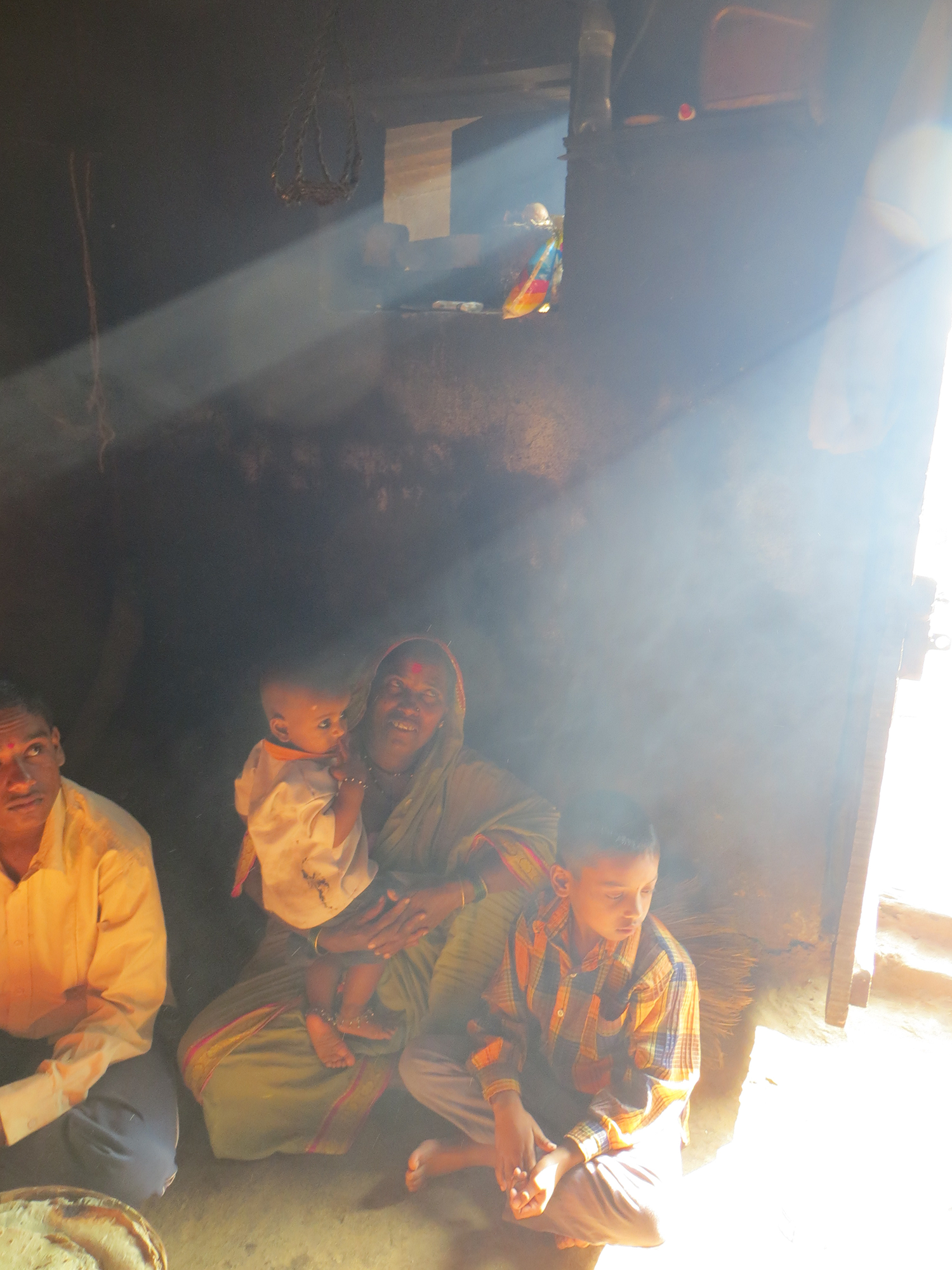
Over 4 million people die prematurely from household air pollution attributable to cooking indoors with solid fuels. More than 50% of premature deaths of children under 5 years old are caused by pneumonia from inhaling soot inside the home. (Photo: Meera Subramanian)
PALMER: Okay, finally we have ether. Now, you’ll have to explain to me why you chose the story you chose for ether.
SUBRAMANIAN: I felt like I wanted to talk and address the issue of population. Talking about the environment and talking about every human being born is an amazing miracle, but also is one more bit of pressure on natural resources, on the earth, so I wanted to look at that issue. So what I decided to do was go to Bihar, which is one of the states in the north that is most populous. Girls get married really young, they start having children very early, and they have some of the highest birthrates in the country of India. So that's where I went and I looked at sexual reproductive health training that was being done by an organization called Pathfinder International.
PALMER: You tell an amazing tale about it - I mean it's very graphic in terms of how it teaches boys and girls - teenagers - about this, it teaches them together. I was a little surprised, I mean it’s more graphic, for instance, than the sex education that mostly kids in America get.
SUBRAMANIAN: That's actually true! [LAUGHS] It's very straightforward but I think we underestimate how valuable information is for children everywhere. I think we are always growing up and trying to figure out how the world works and I think learning about the sexual and reproductive side of things is just as important for a teenage girl in Bihar as it is for someone here in the U.S. [LAUGHS] So, I think it's like just giving this very straightforward information ends up giving them power over other things as well. I was finding these young women to be incredibly empowered and it seemed like a big part of that was just learning the language of how to talk about themselves and voice their own desires. So, maybe I’ll just read you a short bit from the book that talks about that.
“People ask us, “Why do you go to these meetings, do they give you something?” Reena Kumari, an 18-year-old Bihari girl told me. I say, “When you go to pray, do you get something?” They say, “Well that one girl who did the training, she met a boy and she ran away.” She laughed and continued speaking quickly, in a strong voice. We argue back, “You had her for 15 years, and they had her for three days and you're saying we influenced her?” she said. “There's a flaw in your nurturing not in our friendship.”
“You fight back with your parents?” I said.
“Hum bolti hairi!.” she said. “We speak up! Before training, we didn't know anything but after, we do. We learned how to find the right words to negotiate. There are so many changes.”
To negotiate such changes is to ask for everything you want, knowing you might only get a fraction. It is to remain unflinching as you look forward into the future of India’s women and girls and the generations they will bear. The path ahead is difficult, littered with obstacles, still under construction. But I can imagine the youth I met in Bodh Gaya growing up in this new India, their India, moving forward down this road. They shape the way as they go. They link their fingers, they quicken their pace and their voices rising up into that space between spaces, are unafraid.’
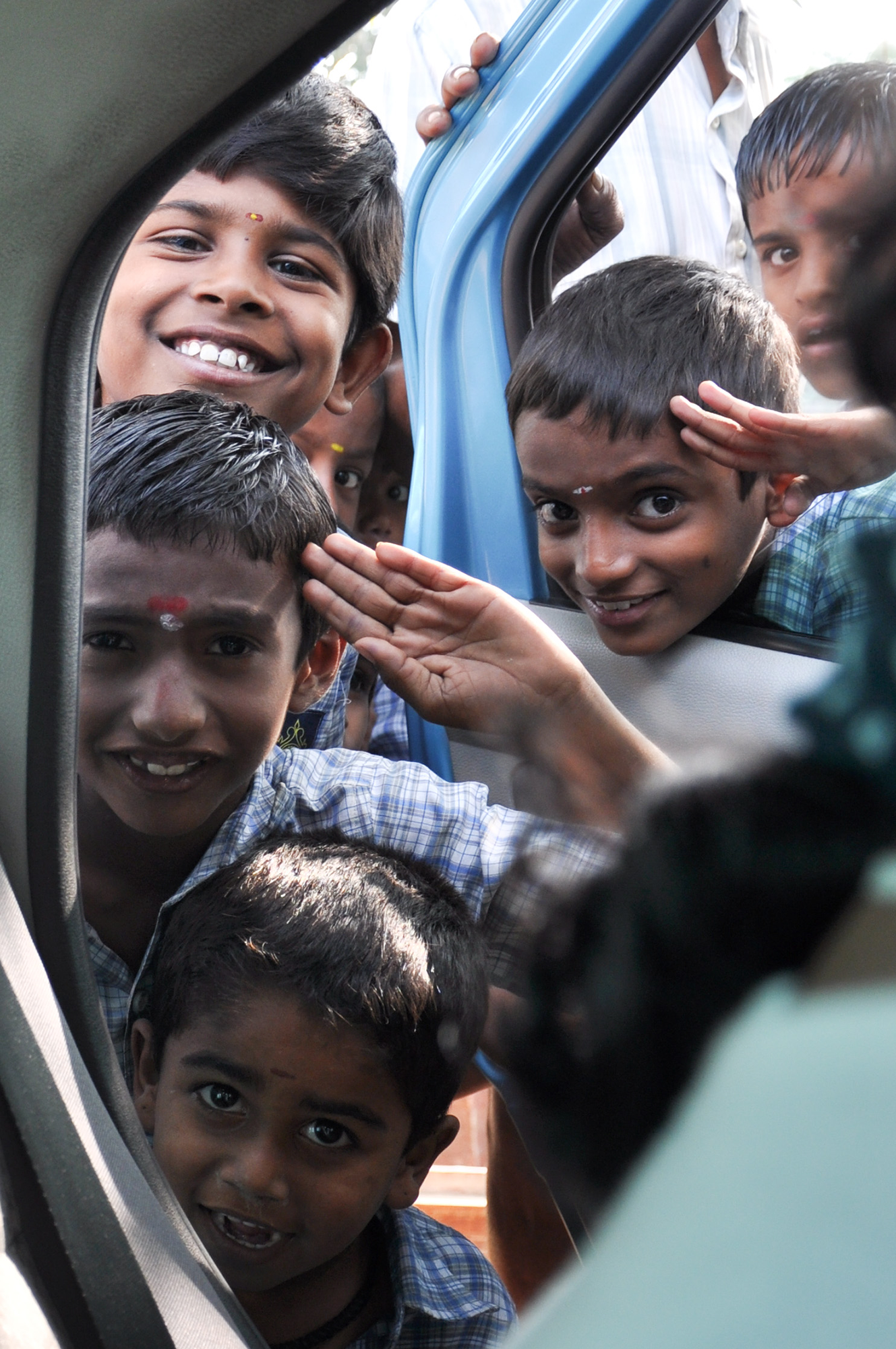
A huge problem for India is its increasing population. A nonprofit Pathfinder International is educates teenagers on sexual and reproductive health. (Photo: Meera Subramanian)
PALMER: You end the book, your conclusion, is saying that you asked everybody, “Do you have hope?” I'd like to turn the tables on you and say, having crisscrossed India as you did, having done all this reporting, do you have hope?
SUBRAMANIAN: [LAUGHS] Ah see but you’re falling into the trap which is what I fell into, is I would ask that question as though “hope” were this noun, this binary thing where the only option is yes or no, do you have it or do not have it, and I'm to do the same thing that when I asked that question of people, I would do the acrobatics of like “well, yes but no,” “sometimes, on a good day..” but I felt like what I came out of the reporting thinking is that it's just this continual process that we have to work towards whatever future we want to envision for ourselves, and in the process of doing that, that is hope embodied. That is living it.
India has huge, huge challenges in front of it and Prime Minister Modi is really pushing development and won the landslide election last year on the platform of development and I feel like India just has a huge question before it of how is it going to develop. I think it could go is really amazing way if they tapped into some of the things that I experienced in India of people working on small-scale local issues across the board. If that was implemented and supported from the top down, if we looked at not pursuing nuclear power and more coal-fired power plants and more mega-dams that all have huge catastrophic problems if they go wrong and instead push alternatives like the technology is just moving forward by leaps and bounds, the costs are coming down. We can do this but it's going take the decision on all levels for India to move in that direction.
CURWOOD: Meera Subramanian’s new book is called “A River Runs Again” – and she spoke with Living on Earth’s Helen Palmer.
Links
Living on Earth wants to hear from you!
Living on Earth
62 Calef Highway, Suite 212
Lee, NH 03861
Telephone: 617-287-4121
E-mail: comments@loe.org
Newsletter [Click here]
Donate to Living on Earth!
Living on Earth is an independent media program and relies entirely on contributions from listeners and institutions supporting public service. Please donate now to preserve an independent environmental voice.
NewsletterLiving on Earth offers a weekly delivery of the show's rundown to your mailbox. Sign up for our newsletter today!
 Sailors For The Sea: Be the change you want to sea.
Sailors For The Sea: Be the change you want to sea.
 The Grantham Foundation for the Protection of the Environment: Committed to protecting and improving the health of the global environment.
The Grantham Foundation for the Protection of the Environment: Committed to protecting and improving the health of the global environment.
 Contribute to Living on Earth and receive, as our gift to you, an archival print of one of Mark Seth Lender's extraordinary wildlife photographs. Follow the link to see Mark's current collection of photographs.
Contribute to Living on Earth and receive, as our gift to you, an archival print of one of Mark Seth Lender's extraordinary wildlife photographs. Follow the link to see Mark's current collection of photographs.
 Buy a signed copy of Mark Seth Lender's book Smeagull the Seagull & support Living on Earth
Buy a signed copy of Mark Seth Lender's book Smeagull the Seagull & support Living on Earth

